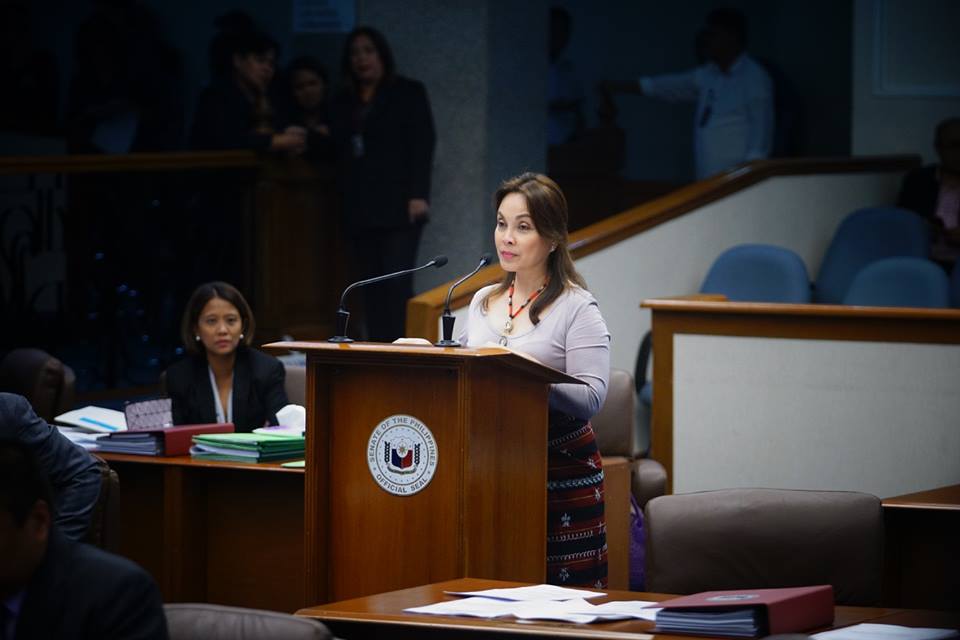News
Legarda renews call for heightened earthquake preparedness

“We never know when an earthquake will occur. But we should know what to do before, during and after the occurrence of such events. Regular safety drills should be done to familiarize citizens with safety and disaster preparedness measures,” said Legarda, a United Nations International Strategy for Disaster Reduction Global (UNISDR) Champion for Resilience. (Photo: Senator Loren Legarda/ Facebook)
MANILA –Senator Loren Legarda on Sunday renewed her call for heightened earthquake preparedness following several temblors that have hit the country, particularly in Southern Luzon, in the past days.
At least two earthquakes with magnitude 5.6 and 6.0 jolted Batangas and were felt in nearby areas including Metro Manila on Saturday, only four days after a 5.5 earthquake also hit the province. These tremors have caused damages to structures.
“We never know when an earthquake will occur. But we should know what to do before, during and after the occurrence of such events. Regular safety drills should be done to familiarize citizens with safety and disaster preparedness measures,” said Legarda, a United Nations International Strategy for Disaster Reduction Global (UNISDR) Champion for Resilience.
She also reminded that disaster management agencies, local government units (LGUs), community leaders, and even citizens should prepare for the Big One, or the projected 7.2-magnitude earthquake in Metro Manila.
“The key to effective disaster prevention is planning. It is important to know if our location is near an active fault and prone to liquefaction or landslide, which may cause damage to houses or buildings. We have to ensure that buildings are not standing on active faults. Evaluation and retrofitting of public and private infrastructure is crucial in ensuring that buildings, bridges and other similar structures can withstand strong quakes,” she stressed.
Legarda explained that earthquakes turn into major disasters due to unsafe structures—poorly built structures, buildings in inappropriate places, inadequate design and materials specification, and shortcuts in construction.
“The additional expense required for making structures safe from earthquakes is worth it especially if it would save thousands of lives,” she said.
“LGUs and barangay leaders must prepare their communities especially by determining open spaces for safe refuge when earthquakes occur and crafting evacuation plans that would help citizens find out the fastest and safest way to reach open spaces and other safe areas,” she added.
Legarda also emphasized the importance of an effective early warning system and massive information and education campaign to equip citizens with knowledge on what to do before, during and after such disasters.
She cited the “5:00pm chime” or the “Municipal Disaster Management Radio Communication Network” of Minato City in Japan wherein every 5:00 in the afternoon the instrumental version of the Japanese folk song “Yuyaku Koyake” is heard in speakers all around the city.
The daily “5:00 pm chime” is a way to ensure that the broadcast system and speakers are working correctly because the speaker network is used to warn people of emergency situations, especially disaster warnings.
“We also need to have this kind of early warning system in the country, so that wherever people are they are informed of important announcements especially in emergency situations such as before, during and after disasters, thereby reducing risks, casualties and damages,” Legarda said.
Legarda reminded that ensuring the structural integrity of buildings and preparedness measures for earthquakes can significantly reduce the impacts projected in the 2004 Metro Manila Earthquake Impact Reduction Study (MMEIRS), which revealed that without the necessary interventions, a 7.2-magnitude earthquake in Metro Manila could destroy 40 percent of residential buildings, damage 35 percent of all public buildings, kill 34,000 people, injure 114,000 individuals, and the ensuing fires will also result in 18,000 additional fatalities.





















